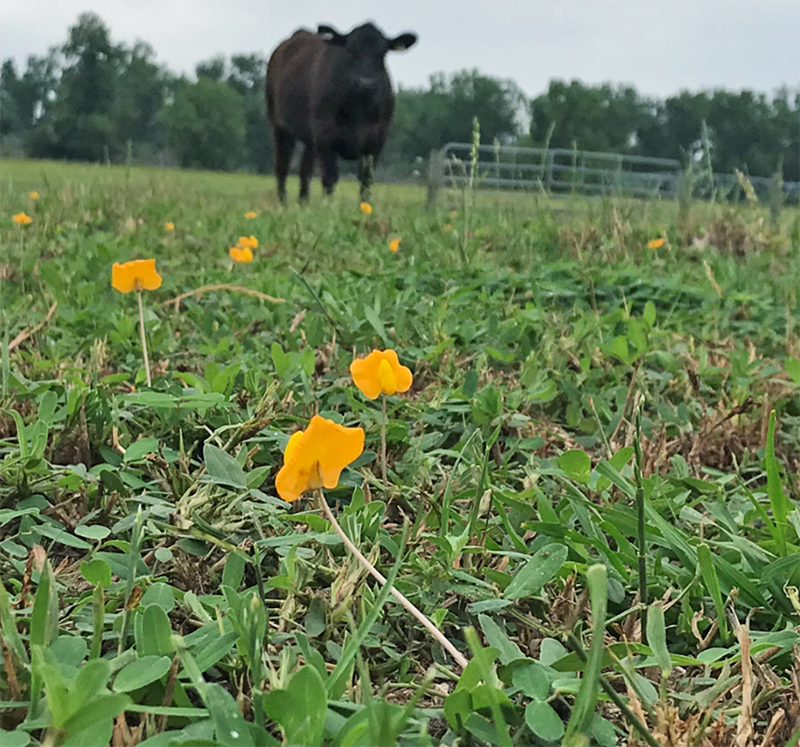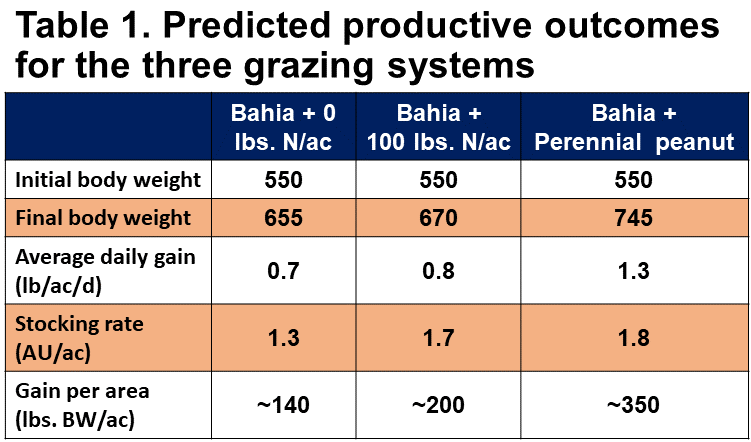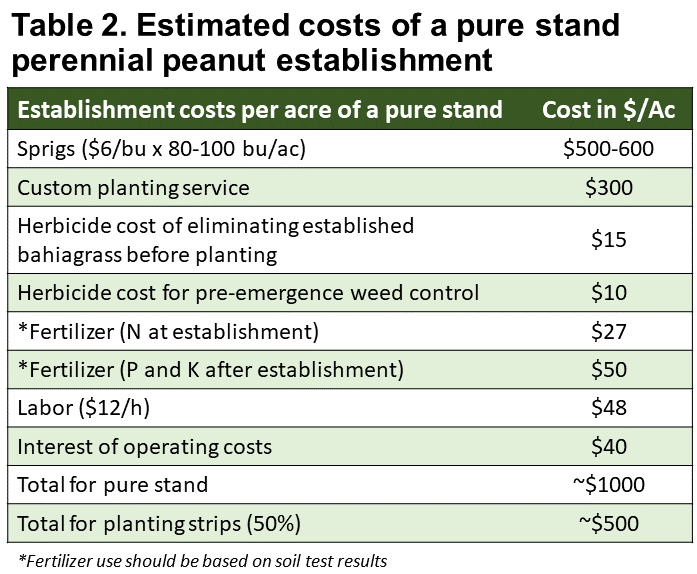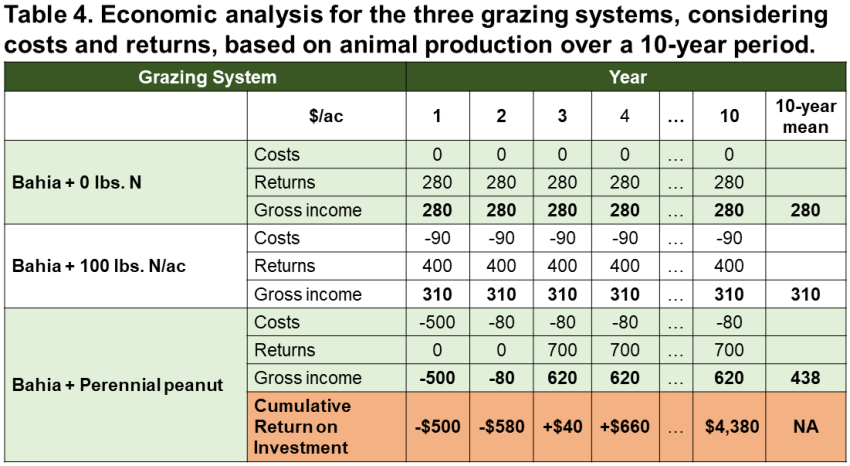
Figure 1. Bahiagrass + perennial peanut pasture at the North Florida Research and Education Center (NFREC), Marianna, FL. Photo credit: Jose Dubeux, UF/IFAS
Nicolas Caram, Marcelo Wallau, UF/IFAS Agronomy Department, and Hannah Baker, UF/IFAS Extension Cattle & Forage Economist
The production and environmental benefits of introducing perennial peanut (aka rhizoma peanut) into bahiagrass pastures are unquestionable and consistent across different locations and years in Central and North Florida. Data of grazing trials carried out in three locations in Florida (Brooksville, Gainesville, and Marianna) over 11 years, consistently show that growing cattle grazing a bahiagrass pasture with or without nitrogen (N) fertilization will gain 0.7-0.8 lb./animal/day during the growing season (May to October). When the perennial peanut is included in these pastures, the average daily gain increases up to at least 1.3-1.4 lbs./animal/day, which translates to 70% greater animal performance compared with the same animals grazing only bahiagrass pastures. Remarkably, these studies indicate that including nitrogen in bahiagrass pastures does not significantly increase individual gain; however, including nitrogen in the system increases forage production and therefore, increases carrying capacity and animal gain per acre.
On average, depending on the weather conditions, we can anticipate carrying capacities of 1.2 animal units (AU) equivalent to 1100 lbs. of body weight per acre for bahiagrass pastures without nitrogen fertilization and 1.7-1.8 AU/ac for bahiagrass pastures with nitrogen fertilization (~100 lbs. N/ac) or in mixture with perennial peanut. The product of animal performance and carrying capacity of each pasture can be translated in gains of 140 lbs./ac body weight (BW) for the bahiagrass without nitrogen, 200 lbs./ac BW for the bahiagrass + 100 lbs. N/ac, and 350 lb. BW for the bahiagrass-perennial perennial peanut mixture over a 150 day growing season (assuming a potential grazing period between May 15 and October 15; Table 1). Interestingly, these results show that we can produce 350 lbs./ac of body weight without supplemental N fertilizer included in the system (+150 lbs./ac compared with the bahiagrass + N; or +75%). This has positive economic and environmental impacts as we reduce the use of N fertilizer, which reduces costs within the operation while decreasing potential N leaching into the groundwater. In other words, we can replace purchased fertilizer with nitrogen acquired from the atmosphere through the legume in symbiosis with bacteria.
–
However, typical producer concerns for introduction of perennial peanut include: 1) the high establishment cost of the perennial peanut, which could be estimated at about $900-1,100 per acre for a pure stand (Table 2), and 2) its slow establishment, which delays the grazing of a pasture for about two years. These limitations constrain adoption by producers, despite its very long persistence (+20 years), high productivity, and economic and environmental benefits.
The consistency in animal production from these pastures in different environments within the state allows for the opportunity to model simple theoretical scenarios and put numbers on these different grazing systems, focusing on production outcomes and economic returns. By modeling a 10-year cost and return analysis, we can demonstrate the value of the investment. To address these concerns let us compare three different grazing systems: 1) an established bahiagrass without nitrogen fertilization, the baseline of Florida grazing systems; 2) the same bahiagrass with 100 lbs. N/ac annually; and 3) a bahiagrass mixture with perennial peanut, where we rely on the biological fixation of the nitrogen by bacteria on the roots of legumes. The following are estimates of animal production from May 15 to October 15 (150 days) and considering growing cattle (heifers or steers) of 550 lb. initial body weight (Table 1).
Now, for the economic analysis we make some assumptions: the land rent costs, cost opportunities, overhead, and farm labor costs are not considered as they could be assumed to be the same for these three scenarios, and here we only want to compare additional investments relative to a baseline of unfertilized bahiagrass. Yet, we include the annual cost associated with the nitrogen fertilization of the bahiagrass monoculture, and the perennial peanut establishment cost (Table 2) in planting strips and the phosphorus and potassium fertilization every two years in this latter pasture. We assumed a bahiagrass already established as baseline, the analysis considered a perennial peanut planted in strips in 50% of the pasture area, therefore the establishment costs instead of $1000/ac are now $500/ac. This is also an approved practice in the NRCS EQIP program in Florida, so it is possible to apply for this conservation program to reduce the cost to producers significantly.
The annual costs of each scenario include 100 lb./ac N for the bahiagrass monoculture every year, and 30 and 60 lb./ac of phosphorus (P2O5) and potassium (K2O) for the bahiagrass-perennial peanut every two years (Table 3), plus additional labor and potential weed control. Additionally, we value the live weight produced per animal at $2.00/lb. live weight, although we recognize that this can vary during the year and between years.
The economic analysis shows that the gross income during a growing season of a grazing system based on an unfertilized bahiagrass pasture with no direct costs (no fertilization and other labors) is $280/ac on average over a 10-year period (Table 4). When we fertilize this pasture with 100 lb./ac N, the gross income increases up to $310/ac (+ $30/ac). However, when we introduce the perennial peanut, and despite its high initial investment, we can expect for a 10-year period, which includes its establishment, a gross income of ~$440/ac (+$160/ac compared with the unfertilized bahiagrass and +$130 compared with the fertilized bahiagrass). Additionally, our simulation does not include potential incomes associated with hay production during the second year of establishment of the legume, which could increase the average gross income. Also, we demonstrate that the initial investment could be paid and covered with the animal production of the first grazing year (Year 3 in Table 4). Moreover, if we consider a bahiagrass-perennial peanut mixture, where the initial investment has been paid off (e.g., year 10), the gross income increases from $440/ac up to $620/ac. Therefore, these results show and confirm the viability and fast return of investments associated with the integration of perennial peanut into bahiagrass pastures, supporting the evidence of productive, economic, and environmental benefits of this grazing system.
- Cow Talks: Special Guests Discuss the Impact of H5N1 Avian Influenza on Agriculture - April 25, 2025
- Why is this weed here? Weed Management in Pasture Systems - February 28, 2025
- What to Look for When Selecting Hybrid Corn Varieties for Silage? - January 31, 2025




